Related Research Articles

New York City Ballet (NYCB) is a ballet company founded in 1948 by choreographer George Balanchine and Lincoln Kirstein. Balanchine and Jerome Robbins are considered the founding choreographers of the company. Léon Barzin was the company's first music director. City Ballet grew out of earlier troupes: the Producing Company of the School of American Ballet, 1934; the American Ballet, 1935, and Ballet Caravan, 1936, which merged into American Ballet Caravan, 1941; and directly from the Ballet Society, 1946.

Michael Fokine was a groundbreaking Imperial Russian choreographer and dancer.
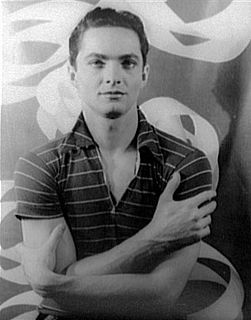
George Zoritch, was a Russian-born American ballet dancer who starred in performances by Ballet Russe companies on stages all over the United States from the 1930s to the 1960s. Internationally known, he was one of the most glamorous figures and striking personalities in mid-twentieth-century ballet.

The Firebird is a ballet and orchestral concert work by the Russian composer Igor Stravinsky. It was written for the 1910 Paris season of Sergei Diaghilev's Ballets Russes company; the original choreography was by Michel Fokine, who collaborated with Alexandre Benois on a scenario based on the Russian fairy tales of the Firebird and the blessing and curse it possesses for its owner. It was first performed at the Opéra de Paris on 25 June 1910 and was an immediate success, catapulting Stravinsky to international fame. Although designed as a work for the stage, with specific passages accompanying characters and action, the music achieved equal if not greater recognition as a concert piece.

The Royal Ballet is an internationally renowned classical ballet company, based at the Royal Opera House in Covent Garden, London, England. The largest of the five major ballet companies in Great Britain, the Royal Ballet was founded in 1931 by Dame Ninette de Valois, it became the resident ballet company of the Royal Opera House in 1946 and was granted a royal charter in 1956, becoming recognised as Britain's flagship ballet company.

Geoffrey Lamont Holder was a Trinidadian-American actor, dancer, musician, and artist. He was a principal dancer for the Metropolitan Opera Ballet before his film career began in 1957 with an appearance in Carib Gold. In 1973, he played the villainous Baron Samedi in the Bond film Live and Let Die. He also carried out advertising work as the pitchman for 7 Up.
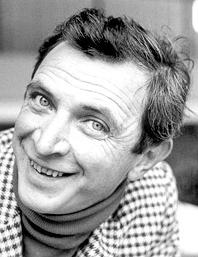
John Cyril Cranko was a South African ballet dancer and choreographer with the Royal Ballet and the Stuttgart Ballet.

Louis Alexandre Mérante was a dancer and choreographer, the Maître de Ballet of the Paris Opera Ballet at the Salle Le Peletier until its destruction by fire in 1873, and subsequently the first Ballet Master at the company's new Palais Garnier, which opened in 1875. He is best remembered as the choreographer of Léo Delibes' Sylvia, ou la nymphe de Diane (1876). With Arthur Saint-Léon and Jules Perrot, he is one of the three choreographers who defined the French ballet tradition during the Second French Empire and the Third Republic according to choreographer Pierre Lacotte.
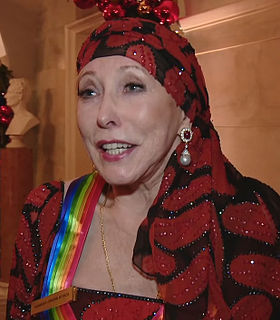
Natalia Romanovna Makarova is a Russian prima ballerina and choreographer. The History of Dance, published in 1981, notes that "her performances set standards of artistry and aristocracy of dance which mark her as the finest ballerina of her generation in the West."

The Ballets Russes was an itinerant ballet company begun in Paris that performed between 1909 and 1929 throughout Europe and on tours to North and South America. The company never performed in Russia, where the Revolution disrupted society. After its initial Paris season, the company had no formal ties there.
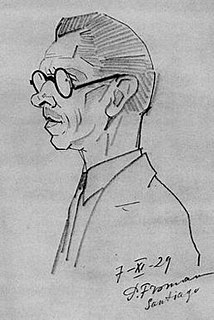
The Sergeyev Collection is a collection of choreographic notation, music, designs for décor and costumes, theatre programs, photos and other materials that document the repertory of the Imperial Ballet of St. Petersburg, Russia at the turn of the 20th century. The majority of the choreographic notations document with varying degrees of detail the original works and revivals of the renowned choreographer Marius Petipa, who served as Premier Maître de ballet of the St. Petersburg Imperial Theatres, as well as notation and music documenting the ballets of Lev Ivanov, who served as second Maître de ballet. Also included in the collection are choreographic notation documenting dances from various operas by both Petipa and Ivanov, respectively.
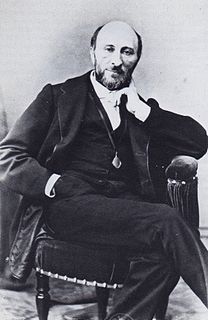
Arthur Saint-Léon was the Maître de Ballet of St. Petersburg Imperial Ballet from 1859 until 1869 and is famous for creating the choreography of the ballet Coppélia.

The company Ballets Russes de Monte-Carlo was formed in 1932 after the death of Sergei Diaghilev and the demise of Ballets Russes. Its director was Wassily de Basil, and its artistic director was René Blum. They fell out in 1936 and the company split. The part which de Basil retained went through two name changes before becoming the Original Ballet Russe. Blum founded Les Ballets de Monte Carlo, which changed its name to Ballet Russe de Monte-Carlo when Léonide Massine became artistic director in 1938. It operated under this name until it disbanded some 20 years later.
Eduard Greyling is a South African ballet dancer, now retired. After an illustrious career as a principal dancer with CAPAB Ballet in Cape Town, he became well known as a dance notator, teacher, journalist, and critic.
John Taras was an American ballet master, repetiteur, and choreographer.

Alexander Gorsky, a Russian ballet choreographer and a contemporary of Marius Petipa, is known for restaging Petipa's classical ballets such as Swan Lake, Don Quixote, and The Nutcracker. Gorsky “sought greater naturalism, realism, and characterization” in ballet. He valued acting skills over bravura technique His interpretations of ballets were often controversial and he often used artists outside the dance world to create sets and costumes.
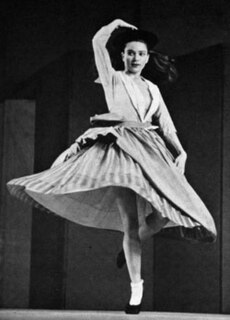
Eleanor Campbell King (1906–1991) was an American modern dancer, choreographer, and educator. She was a member of the original Humphrey-Weidman company, where she was a principal dancer in the pioneering modern dance movement in New York City, then moving on to choreography and founding her own dance company in Seattle, Washington. She was a professor emerita at the University of Arkansas, where she taught from 1952 to 1971, before retiring to Santa Fe, New Mexico to start a new course of study into classical Japanese and Korean dance. She choreographed over 120 dance works, and wrote extensively for a variety of dance publications. In 1948, she was named Woman of the Year in Seattle, and in 1986 was listed as a "Santa Fe Living Treasure", also receiving the New Mexico Governor's Artist Award. In 2000, her archive was recognized by the White House Millennium Council's "Save America's Treasures" program.
Senia Russakoff Alexander was a Russian dancer and teacher.

Alexei Osipovich Ratmansky is a Russian-American choreographer and former ballet dancer. As of April 2014 he is the artist in residence at the American Ballet Theatre. From 2004 to 2008 he was the director of the Bolshoi Ballet.

Joan Benesh was a British ballet dancer who, with her husband Rudolf, developed the Benesh Movement Notation, which is the leading British system of dance notation.
References
- ↑ Pravda(newspaper) Moscow, Russia March 13, 1995: "The Firebird of Richard Holden"
- ↑ Dance Magazine Sept., 1967: "Writing Ballet in Benesh" Richard Holden describes Benesh dance notation
- ↑ Dance Magazine October, 1967: "Choreologist at the Met" Richard Holden's work at the Metropolitan Opera
- ↑ Opera News April, 1969: "Choreology" About Richard Holden's work at the Metropolitan Opera
- ↑ Tucson Daily Citizen, April 21, 1968: "Top Ballet Possible Here, Says Holden"
- ↑ Revista (Mexican arts magazine) November 1976: "Puntas, Curvas y Guiones de Ballets Mexicano" About Richard Holden at Universidad de Mexico, Mexico City
- ↑ New York Times June 9, 1985: Jennifer Dunning - "The Dance: Balletfore" - reviews Holden's "Two Pigeons" production in New York City. Retrieved Dec. 7, 2008.
- ↑ New York Times Oct. 18, 1986: Jennifer Dunning - "Ballet: New York Theater" - reviews Holden's staging of "The Humpbacked Horse" in New York City. Retrieved Dec. 7, 2008.
- ↑ Arizona Daily Star April 27, 1968: "'Alice' provides colorful Whimsym"
- ↑ Broadcast Media Award April 17, 1969: A live performance of Holden's "Alice" was the first color broadcast on public TV station KUAT, University of Arizona, Tucson
- ↑ Arizona Daily Star March 18, 1997: "Arizona Opera Stages a Delightful 'Traviata'" Article includes a review of Holden's choreography
- ↑ Kalinka Dancers, Tucson, AZ
- ↑ Arizona Daily Star obituary published Oct. 22, 2015